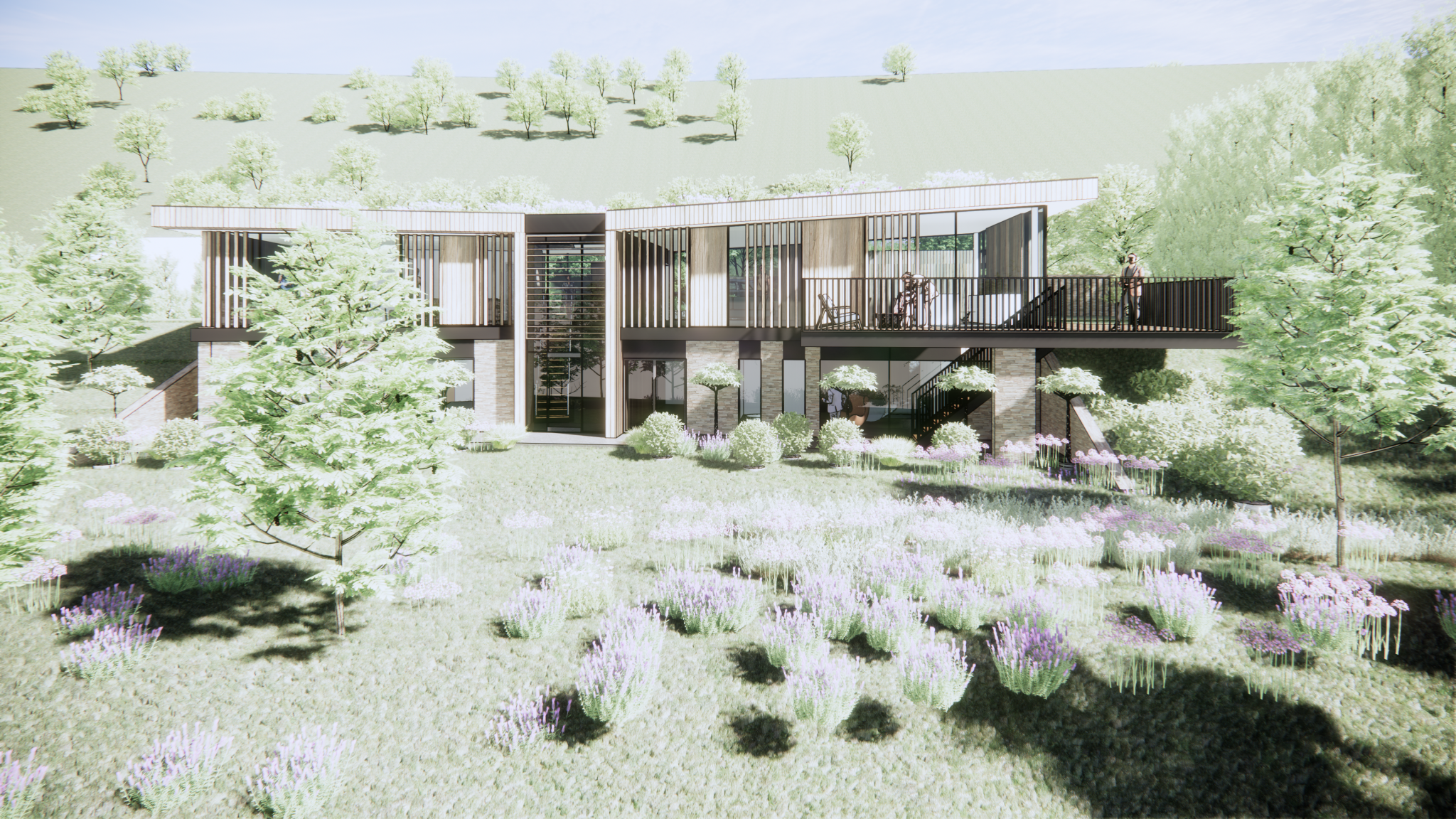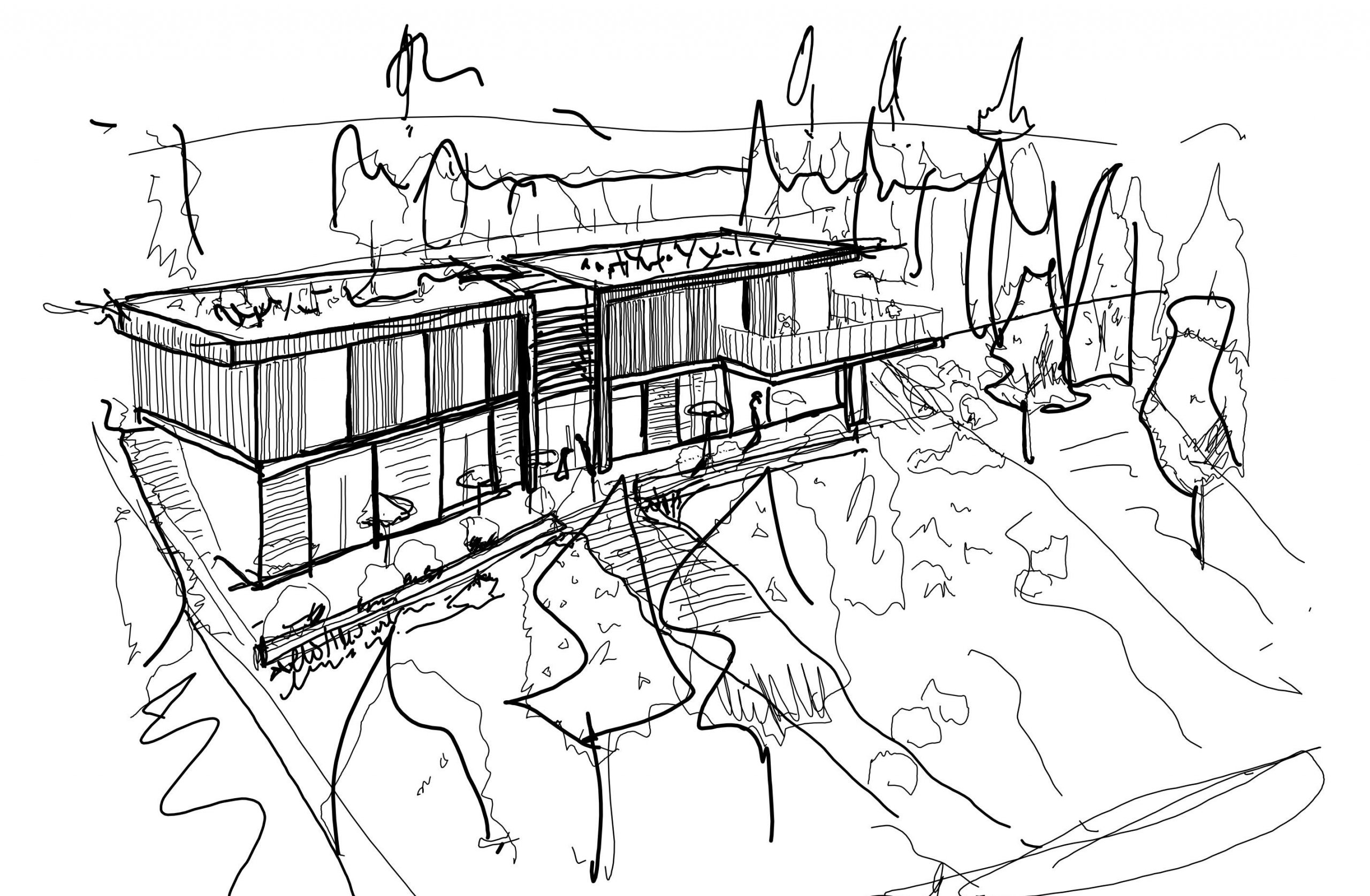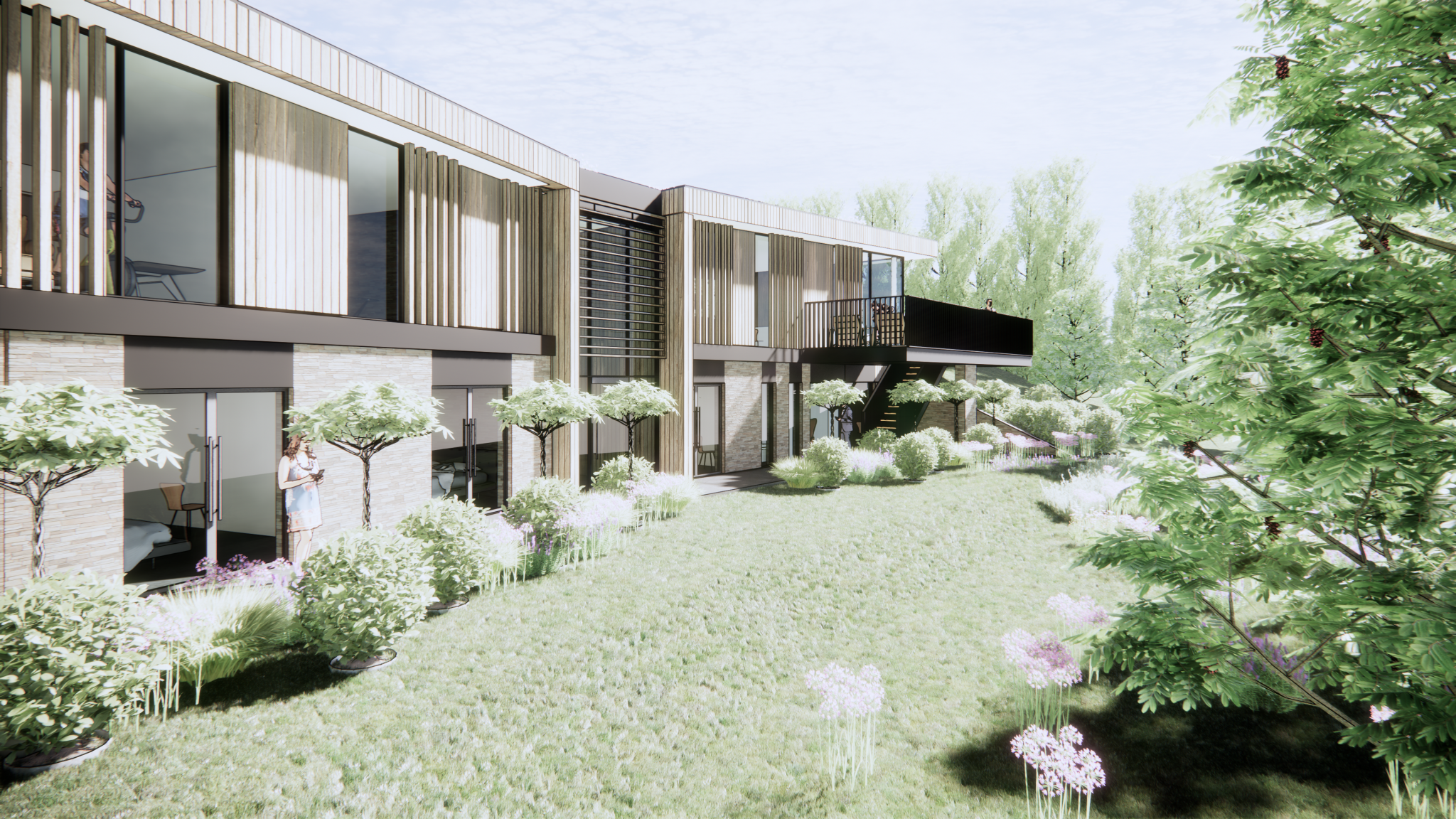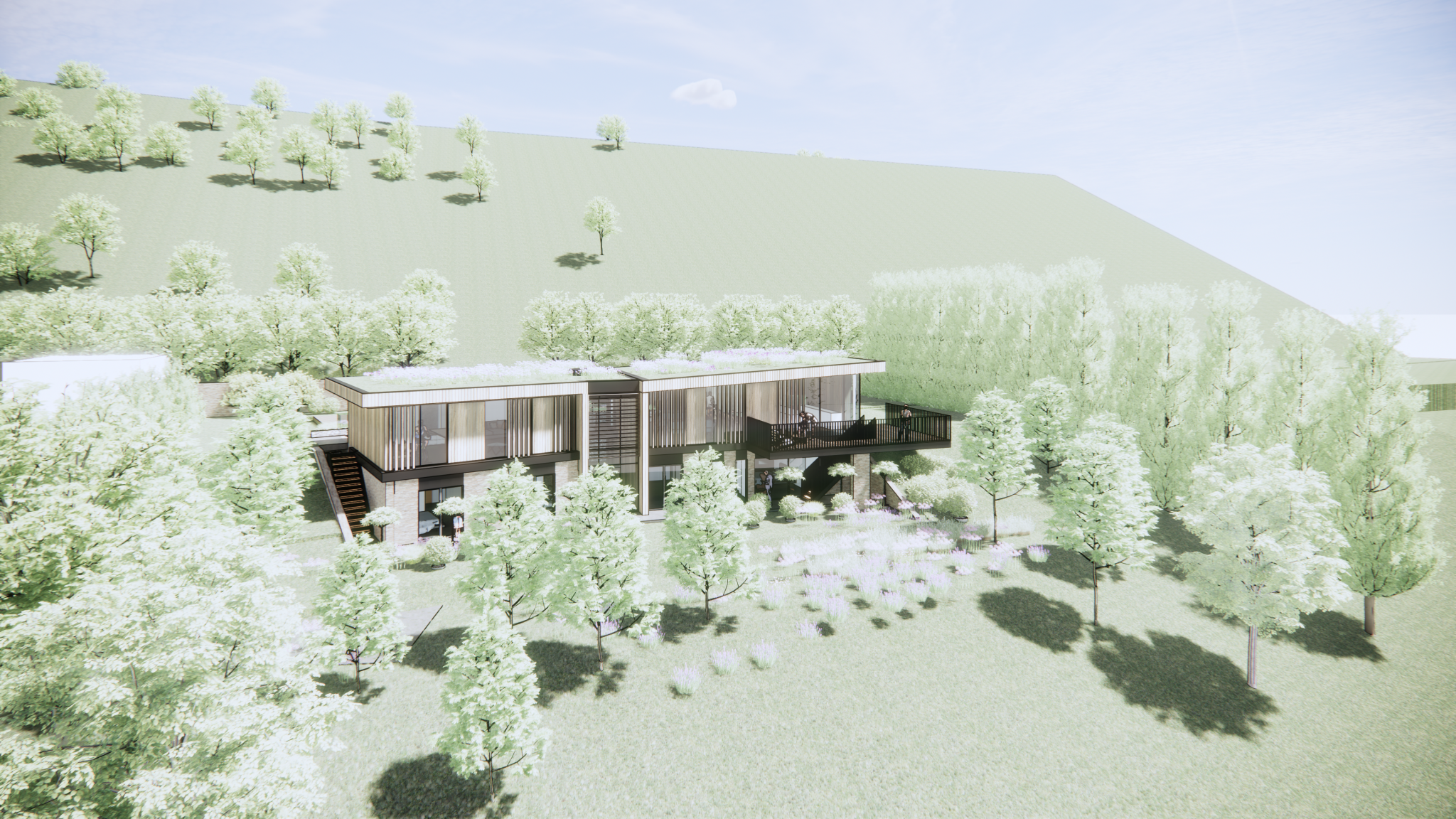
SKY GARDEN, DAISY BANK ROAD, LECKHAMPTON, CHELTENHAM
Lewis Critchley Architects have designed a self-build contemporary home located at the base of the Cotswolds escarpment withing a semi-rural landscape context in an area of outstanding natural beauty in close proximity to the town of Cheltenham in Gloucestershire. As part of a wider consultant team working collaboratively a successful planning approval was granted. The site lies within the Cotswolds Area of Outstanding Natural Beauty (AONB) and the Leckhampton Hill and Charlton Kings Common Site of Special Scientific Interest (SSSI) lies to the south of Daisy Bank Road.
In terms of the proposed design of the replacement dwelling, it has been carefully considered in order to make best use of the topography of the site and minimise any impact on the landscape. The materials to be used in the construction of the replacement dwelling have been selected to connect the building to the existing landscape and include the usage of timber cladding and PPC aluminium glazing. The glazing will maximise the views whilst maintaining privacy for the occupiers and the siting of glazing will maximise solar gain to the property. There is also a proposed sedum roof over the entire building which will help the building integrate into its natural surroundings, especially in views from further up the Cotswold escarpment.
The body of the main element of the building will run parallel with Daisy Bank Road, making the most of the site’s topography and the views to the north. The dwelling will be viewed as a single storey building from glimpsed views from the road and two storey from the rear. The form and scale of the building conforms to the character of the area – generally large detached properties sat within generous plots.
Paragraph 126 of the NPPF identifies that “The creation of high quality, beautiful and sustainable buildings and places is fundamental to what the planning and development process should achieve. Good design is a key aspect of sustainable development, creates better places in which to live and work and helps make development acceptable to communities.”
Moreover, paragraph 130 states that that planning policies and decisions should ensure development functions well and adds to the overall quality of the area, not just for the short term but over the lifetime of the development. Development should be visually attractive as a result of good architecture, layout and appropriate and effective landscaping, whilst being sympathetic to local character and landscape setting.
Accompanying the approved application a Landscape and Visual Impact Assessment was carried out which suggested measures to mitigate any potential landscape effects. These measures included new tree and hedge planting of native species within site boundaries to maintain and enhance the rural setting of the development, as well as using materials and finishes in keeping with the local vernacular. The proposal incorporates all of these measures






